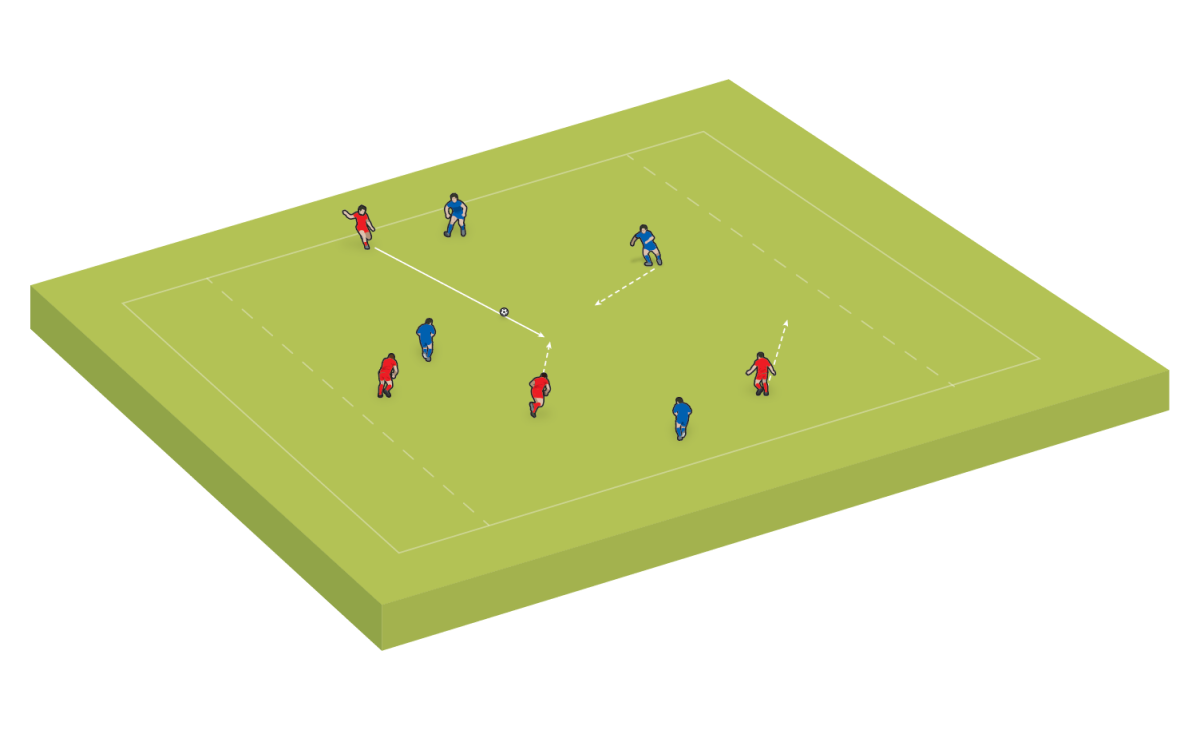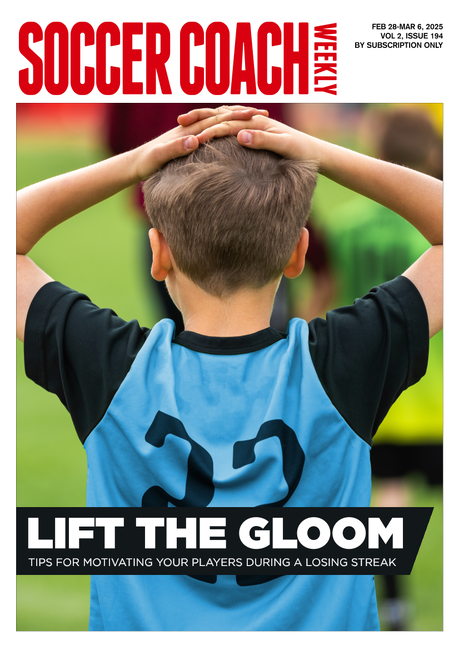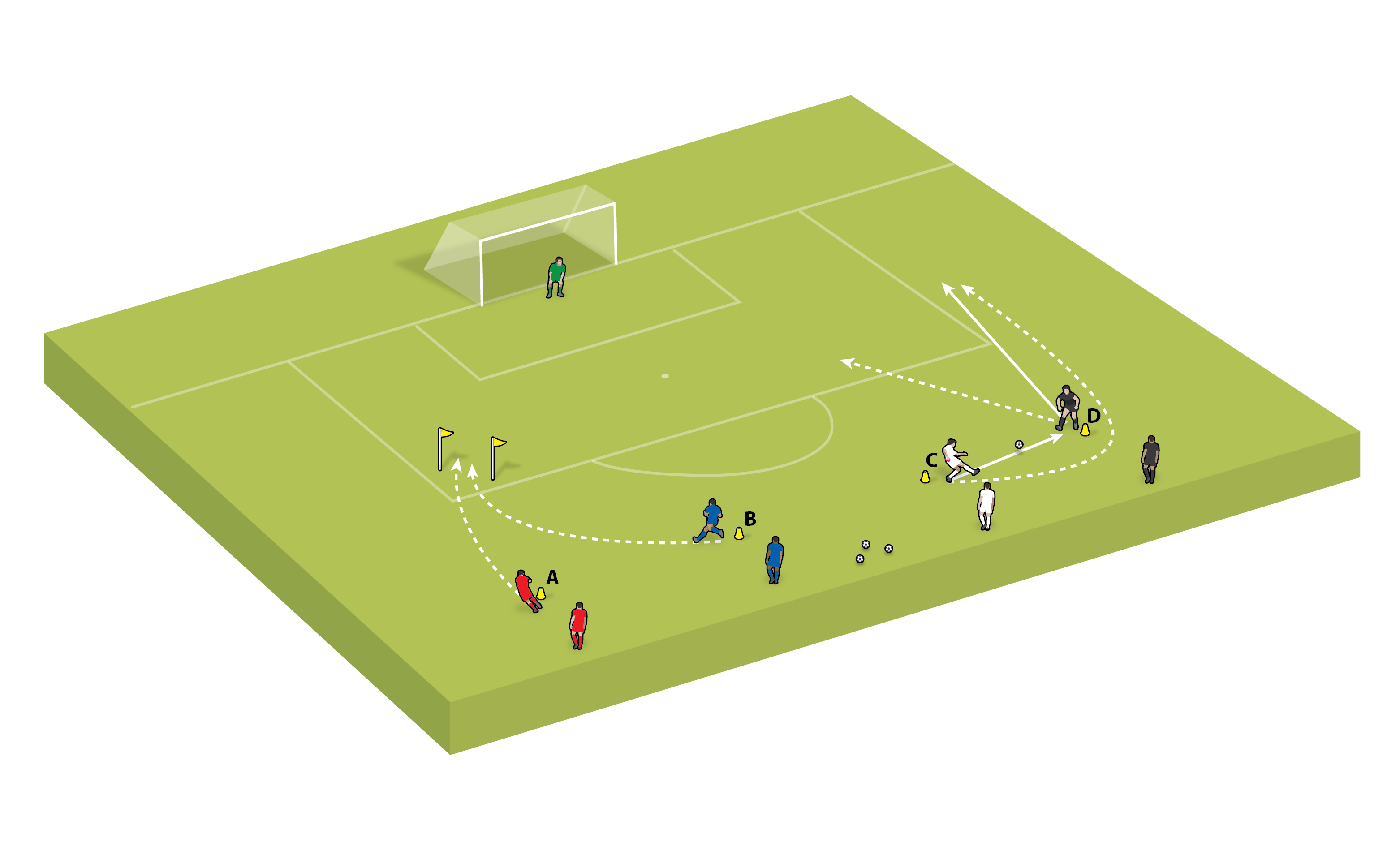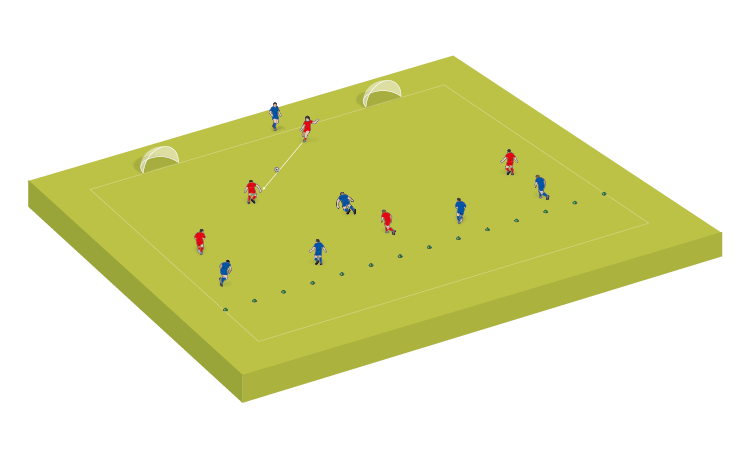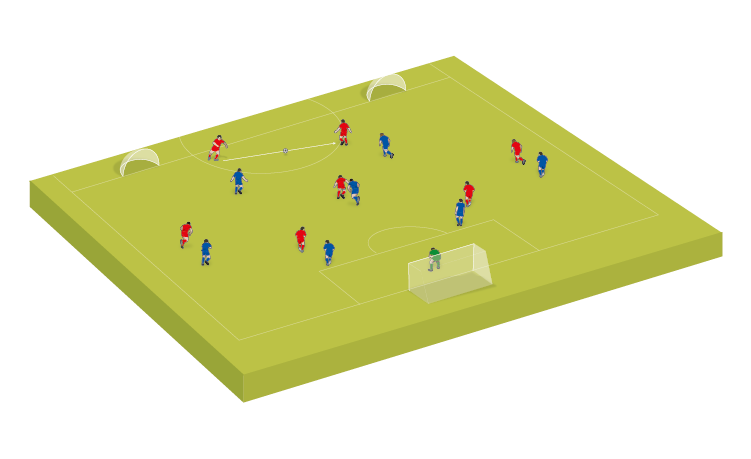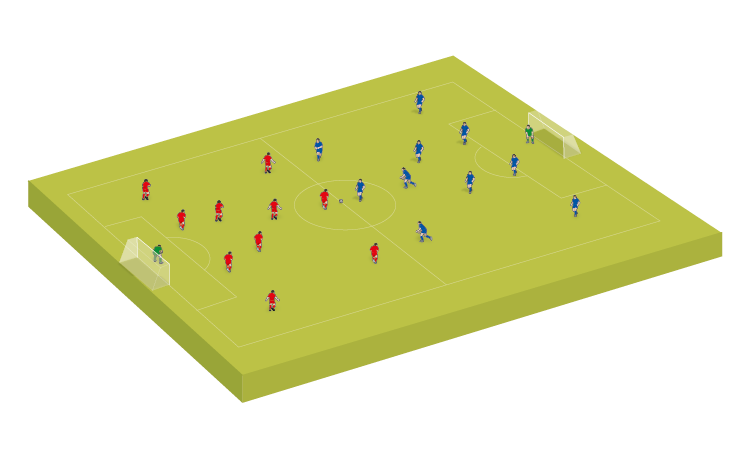Introducing offside
As a team steps up to nine-a-side, they need to learn how to time runs and passes to stay onside.
WHY USE IT
Gives players an understanding of timing of runs, plus the weight and placement of passes, which is essential in nine-a-side.
SET UP
Set out a rectangular area of a size suitable for the age, ability and number of your players. Mark an end zone at both ends. Split players into two teams. The game is directional – one team defends one end zone and attacks the other.
HOW TO PLAY
Teams win a point if a player receives a pass within the end zone. Players cannot wait in the end zone; they can only enter it once a pass has been made. The line separating the main area and the end zone therefore acts as an offside line. If a team wins a point it retains possession and the game switches direction – the team now attacks the other end zone.
Coaching points
A player on the ball should look for movement of their team-mates and play into the end zone where possible. Those without the ball need to time their movement so they arrive in the end zone at approximately the same time as the ball. As a pair, players should look to avoid a straight pass on to a straight run; instead it should be a straight run and diagonal pass, a diagonal pass and straight run or a diagonal pass and run.
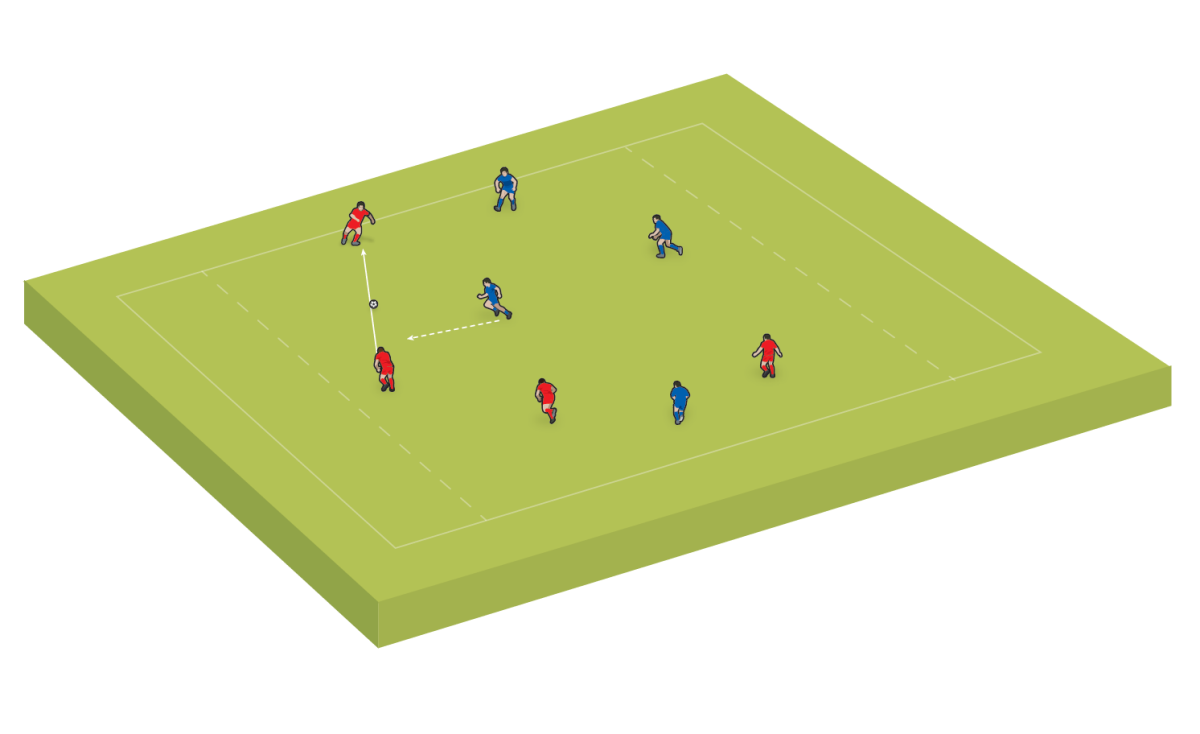
Related Files
Coaches Testimonials

Gerald Kearney, Downtown Las Vegas Soccer Club

Paul Butler, Florida, USA

Rick Shields, Springboro, USA

Tony Green, Pierrefonds Titans, Quebec, Canada
Soccer Drills
Discover the simple way to become a more effective, more successful soccer coach
In a recent survey 89% of subscribers said Soccer Coach Weekly makes them more confident, 91% said Soccer Coach Weekly makes them a more effective coach and 93% said Soccer Coach Weekly makes them more inspired.
*includes 3 coaching manuals
Get Weekly Inspiration
All the latest techniques and approaches
Soccer Coach Weekly offers proven and easy to use soccer drills, coaching sessions, practice plans, small-sided games, warm-ups, training tips and advice.
We've been at the cutting edge of soccer coaching since we launched in 2007, creating resources for the grassroots youth coach, following best practice from around the world and insights from the professional game.
